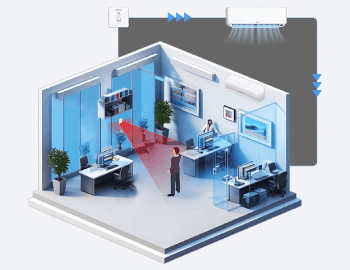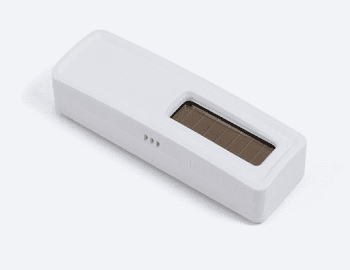Sustainability affects us all, and commercial and industrial buildings are under increasing pressure to improve efficiency and reduce carbon footprints as a result. One powerful yet often overlooked tool aiding this progress, in a small but no less efficient way, is the humidity sensor. These devices play a significant role in maintaining optimal building conditions for energy efficiency and occupant comfort.
How Do Humidity Sensors Help Buildings?
Humidity sensors monitor the moisture levels in the air on an ongoing basis, providing real-time data that informs climate control systems. Whether integrated into a building management system (BMS) or used independently, these sensors allow HVAC systems to react in real time to maintain balanced indoor environments.
When air gets too humid, cooling systems often overcompensate; when air is too dry, heating systems work harder than necessary. By measuring and adjusting indoor humidity levels, a smart humidity sensor can reduce the workload on HVAC systems, directly cutting energy use.
Why Are These Sensors Important?
Modern buildings require more than just reactive maintenance. Modern standards call for smart, data-driven infrastructure that supports sustainability goals in the long-term. With environmental regulations tightening and energy costs rising, humidity sensors are essential for compliance and cost control.
An advanced humidity smart sensor will also combine motion and temperature data with humidity monitoring, helping businesses implement intelligent occupancy-based environmental control, which would include only heating, cooling, or ventilating when and where it’s actually needed.
The rapid development of IoT (Internet of Things) ecosystems has made it easier than ever to deploy these devices at scale. From wireless LoRaWAN to EnOcean’s humidity monitoring system for energy harvesting solutions, these sensors are now easier to install and integrate, without the need for complex wiring or a high degree of maintenance.
Who Benefits Most from Humidity Sensors?
A vast range of industries are embracing humidity monitoring to improve operational efficiency and environmental stewardship:
- Data centres and server rooms use them to maintain consistent indoor climates across large property portfolios.
- Manufacturing plants (especially in electronics and pharmaceuticals) require stable environments for product integrity.
- Commercial offices and smart buildings use them as part of intelligent climate control systems to reduce energy.
- Museums and galleries use them to preserve artwork and historical artefacts.
- Commercial offices use these monitors as part of intelligent climate control systems to reduce wasted energy.
Long-Term Energy and Cost Savings
Humidity sensors signal the ideal times for HVAC systems to turn on, or use more energy, which extends equipment lifespan and cut energy bills. For example, a well-tuned sensor system can reduce energy usage by 10–30% in commercial buildings. Additionally, many sensors feature ultra-low power consumption and long battery life, making them cost-effective over time.
The LoRaWAN temperature humidity sensor models like industrial-grade EM300-TH and the equally formidable Milesight WS203 also enable long-range, low-power communication perfect for large buildings or campuses. These sensors help capture and visualise trends over time, allowing facility managers to spot inefficiencies and respond proactively.
Humidity sensors are more than just environmental monitors. In fact, they're smart tools for a greener, more efficient future. Businesses that invest in high-performance, IoT-enabled sensors today will reap the benefits of lower energy bills, reduced carbon emissions, and smarter facility management tomorrow.











